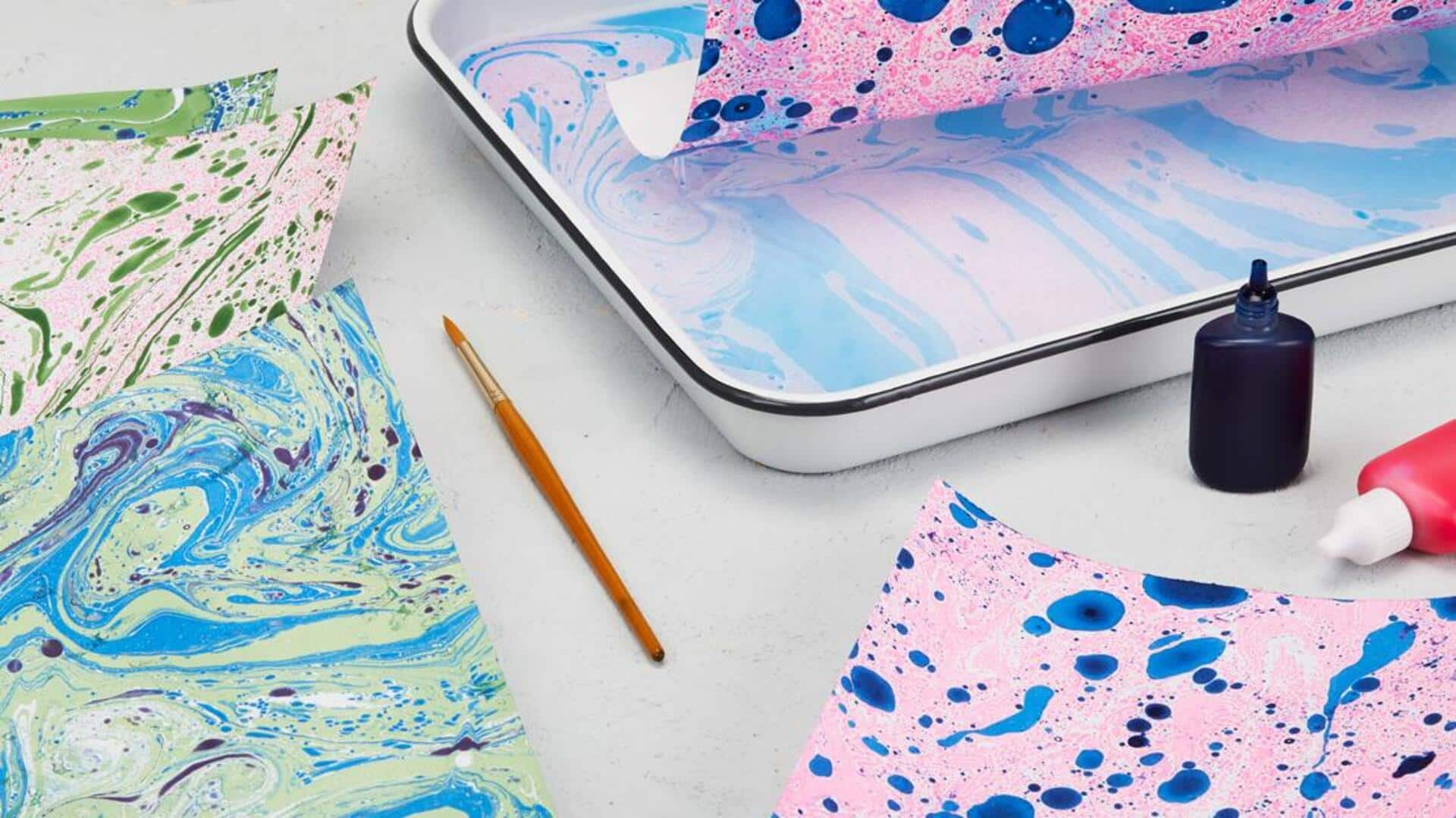
What is paper marbling?
What's the story
Paper marbling is an ancient art form that involves creating intricate patterns on paper. The technique, which originated in Asia, involves floating pigments on water and then transferring them onto paper. This process results in unique designs that are often used for decorative purposes or as covers for books. The art requires patience and precision, making it a meditative practice for many enthusiasts.
#1
Historical origins of paper marbling
Paper marbling dates back to the 12th century, when it was first practiced in China. From there, the art spread to Japan and eventually to Europe via trade routes. In Europe, it became popular in the 17th century as a method to decorate book covers and endpapers. Each region added its own flair to the technique, resulting in various styles and patterns.
#2
Materials needed for paper marbling
To start paper marbling, you'll need some basic materials: water, pigments or inks, a shallow tray or tub, and absorbent paper. The pigments should be specially formulated for marbling so that they float on water without sinking. A sizing agent can also be added to the water to help create better patterns by altering the surface tension.
#3
Techniques involved in paper marbling
The process of paper marbling involves several techniques that create different patterns. The most common ones are combing (dragging a comb through floated pigments), swirling (using a stick or brush to swirl colors), and stone patterning (creating pebble-like designs with drops of paint). Each technique requires different tools and methods but follows the same basic principle of manipulating floated pigments on water.
Tip 1
Tips for beginners in paper marbling
For beginners interested in trying out paper marbling at home, it is advisable to start small with basic patterns like swirling or combing. Practicing these simple designs will build confidence before moving onto more complex ones like stone patterns or floral motifs. Using high-quality materials ensures better results while keeping costs low by reusing supplies wherever possible.